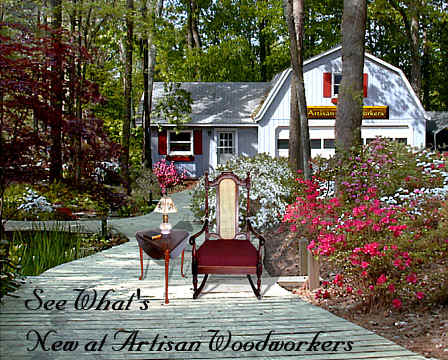

Glossary of Terms,
Antique Furniture
G
Gadroon: Ornament carved on the edges either of flat areas or of turnings resembling short convex or concave flutes or ruffles. It is common in Elizabethan work, Italian Renaissance, and other styles influenced by Italy.
Gallery: Small railing of metal or wood; or raised rim around the tops of tables.
Game Table: One of the earliest specialized types of tables developed for games, such as dice, cards, chess, or draughts, backgammon, etc.
Garland: A decorative detail representing a wreath or free arrangements of flowers, leaves, or fruit.
Gate-Leg Table: A type of table on which the leaves are supported upon framed gates made to swing out from the frame of the table on either side. The frame of the tables is usually turned.
Georgian: Period (1715-1795): Covers the reigns of George I, II, and III up to the time of the Regency includes the works of Chippendale, Sheraton, the Brothers Adam, and Hepplewhite; shows strong French and Oriental influences.
Gesso: A substance made of plaster and glue, which may be molded into ornament of various shapes, and which is usually painted or gilded.
Gimp: A woven ribbon used in upholstering to cover the heads of tacks on a piece of furniture.
Glazed Doors: Doors fitted with glass, often with a lattice pattern of woodwork, or tracery.
Glazing: In painting, glazing is the application over the finish paint of a thin wash coat that is then wiped off, thereby modifying or subduing the base color. It produces a soft, mixed tone.
Gooseneck: Double curved arch of the pediment of highboys and the like; also called a swan-neck.
Gothic: Period (1100-1550) strongly influenced by ecclesiastical architecture. Nobility and mobility were handmaidens since constant warfare made nomads of feudal barons; so their straight, heavy furniture consisted principally of trunk-like chests, folding chairs, and dining tables ( board on trestles). Wood was oak, carved or with linen-fold ornamentation; sometimes painted tracery.
Gouge Carving: Rudimentary form of decorative carving found in cruder styles such as the Gothic in Spain and England. Usually simple chisel marks in rhythmic repetition.
Grain: Pattern arrangement of wood fibers.
Graining: Process of painting to resemble the color and figure of wood.
Greco-Roman: Refined decoration style of the late classical antiquity, roughly 200 BC- AD 200. Appeared in the 18th Century through the excavations of Herculaneum and Pompeii, and formed the basic for 18th Century revivals. In itself a free mixture of style in Rome, Greece, and Egypt.
Greek Key: Band pattern of intersecting short lines at right angles, forming a series of squared hook shapes.
Griffin: Mythological creature having an eagle's head supported by a lion's body. Used as a decorative motif.
Grille: A term applied to ornament composed of turned spindles, decorative wrought iron , or pierced carving, used as a screen over an opening; often fabric-backed.
Gros point: French meaning large needle. A kind of coarse embroidery used in upholstery in which the stitches are comparatively large.
Gueridon: A small French occasional table with rounded top.
Guilloche: Continuous running or band ornament of interlacing circles or figure 8's enclosing circular medallions.
